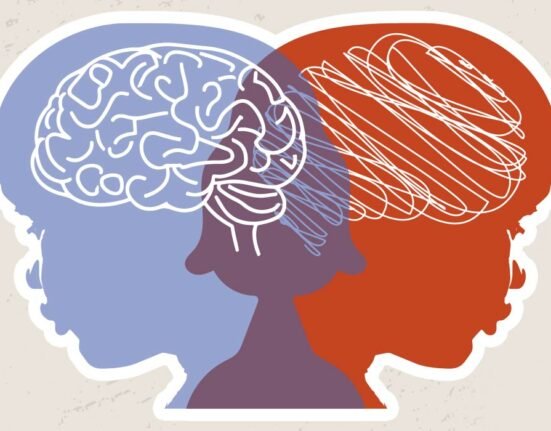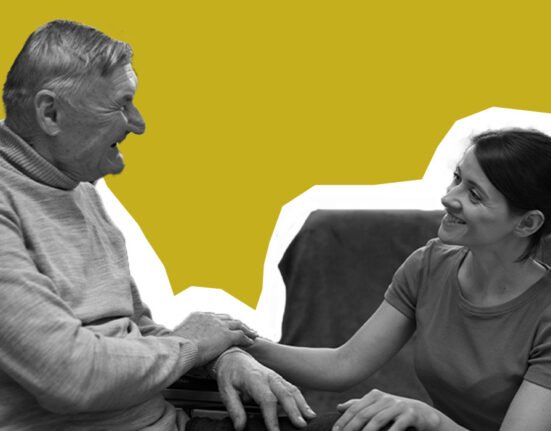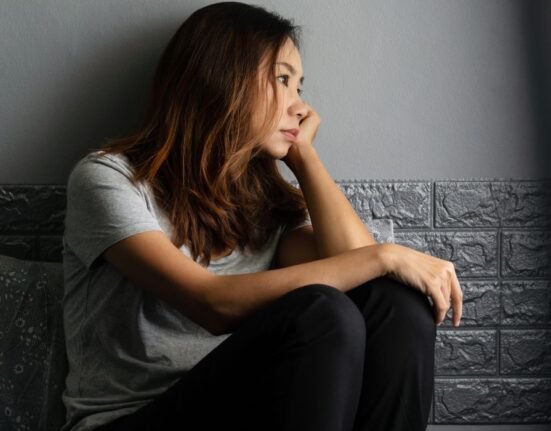How many times have you tried to explain to your parents that they need to seek therapy, but they live in complete assurance on how they are mentally fittest? Surprisingly, there exists a term for this “anosognosia”. It is a neurological condition where the patient is unaware of the disorder or illness they are suffering from. The parent’s example is very minuscule, this phenomenon is prominent and can become very harmful if left untreated. For example, in the movie “A Beautiful Mind” (2001), Nash cannot recognize or acknowledge his mental illness, despite clear symptoms and the impact on his life. Causes include some brain injury, neurological conditions like dementia or Alzheimer’s, some mental illness, lack of insight or cognitive dissonance.

Whereas Anorexia Nervosa is an eating disorder, where an individual eats so less that it leads to a significantly low body weight. The movie on Netflix called “To the Bones” is commended for its accurate and heartbreaking portrayal of this disorder. Causes include genetic factors, imbalance in neurotransmitters, psychological factors (obsessive-compulsive tendencies, low self-esteem, anxiety, etc.), sociocultural factors (family dynamics, stress and trauma, body dissatisfaction and image issues, etc.).
Relation between Them
Anorexia nervosa may have lifetime prevalence rates of up to 4% in females and 0.3% in males. Anosognosia, or the inability to recognize one’s thinness, is the foundation of anorexic denial. Research indicates that between 50 and 70 per cent of individuals suffering from anorexia nervosa display some degree of denial over the gravity of their illness. Severe denial makes patients less likely to participate in therapy and more likely to discontinue treatment altogether. For example, let us take a person, Rahul who has Anorexia Nervosa due to constant exposure to media and promotion of ideal male-built body types. There are clear signs of malnutrition, and his parents report it has been present for a year. Now, a
anosognosia can be present in three ways:
- Rahul will deny completely that he looks malnourished or call his diet adequate enough (distorted self-perception).
- They may faint, get tired easily, have a weak immune system, and show vital signs of a serious health risk. But Rahul brushes off the doctor’s concerns, believing that these issues are either exaggerated or unrelated to her eating habits (refusal to acknowledge symptoms).
- Rahul’s parents encourage him to seek professional help (a therapist and dietitian) suggest a treatment plan. Rahul’s anosognosia leads him to reject this advice.
Rahul’s example illustrates how anosognosia complicates the treatment of anorexia nervosa. This case highlights the need for specialized therapies to help people with anosognosia like Rahul recover. These therapies should treat both the neurological and psychological components of the condition.
What can a ByStander Do?
If you know someone who might be going through this, you can help them in multiple ways. Encourage them to seek professional help, be a supportive listener, educate yourself and provide them with accurate information, be patient with them without rushing/ pressurizing them into anything, involve trusted individuals who can provide additional support, avoid criticism, and focus on their health and not their weight. Parents especially, often make this last mistake of making it about their weight which triggers the patient further.
What if you are going through this?
If you believe in the slightest or are informed by someone, then seek professional help. Educate yourself and involve trusted individuals who can provide you with additional resources. Monitor your physical health and keep a journal (measure calorie intake). Although there is no helpline number for Anorexia Nervosa in India, unlike the US, but make sure you consult a therapist and ger yourself checked in.
Further Facts and Resources
- Peer support groups and online communities offer valuable resources for individuals dealing with anorexia:
- https://anad.org/get-help/about-our-supportgroups/#:~:text=ANAD%20pioneered%20the%20eating%20disorder,and%20find%20community%20in%20recovery.
- https://www.soulup.in/products/support-groups-eating-disorder-support-group
- In cultures with heavy media influence promoting unrealistic body standards, rates of anorexia nervosa can be higher.
- Innovative therapies like “virtual reality exposure therapy” and “art therapy” are emerging to help individuals with anorexia and anosognosia.
- Research has indicated that anosognosia could be associated with dysfunctions in the right hemisphere of the brain, especially in the right parietal lobe and other regions related to self-awareness and insight.
- Common treatment options for both anorexia nervosa and anosognosia include cognitive-behavioral therapy (CBT), nutritional counselling, and psychiatric intervention to address distorted thinking, nutritional deficiencies, and underlying psychological issues.
Recognizing the overlap between anosognosia and anorexia nervosa highlights the difficulties in treating both disorders and highlights their complexity. The inability to recognise one’s sickness, or anosognosia, makes it difficult to assess the severity of anorexia nervosa, which greatly complicates care of the disorder. People who have anorexia frequently suffer from mistaken self-perception, denial of symptoms, and reluctance to treatment, as Rahul’s fictional story illustrates. This emphasises how important it is to have specialised treatment plans that deal with the neurological and psychosocial components of anosognosia.
References +
- Cleveland Clinic. (2022, April 21). Anosognosia: What It Is, Causes, Symptoms & Treatment. Cleveland Clinic. https://my.clevelandclinic.org/health/diseases/22832-anosognosia
- Englebert, J., Follet, V., & Valentiny, C. (2017). Anorexia Nervosa and First-Person Perspective: Altruism, Family System, and Body
- Experience. Psychopathology, 51(1), 24–30. https://doi.org/10.1159/000485629 Moore, C. A., & Bokor, B. R. (2022). Anorexia Nervosa. PubMed; StatPearls Publishing. https://www.ncbi.nlm.nih.gov/books/NBK459148/#:~:text=Anorexia%20nervosa%20is%20defined%20by
- Starzomska, M., & Tadeusiewicz, R. (2016). Pitfalls in anorexia nervosa research: The risk of artifacts linked to denial of illness and methods of preventing them. Psychiatria Danubina, 28(3), 202–210. https://www.researchgate.net/publication/308548064_Pitfalls_in_anorexia_nervosa_research_The_risk_of_artifacts_linked_to_denial_of_illness_and_methods_of_preventing_them
- van Eeden, A. E., van Hoeken, D., & Hoek, H. W. (2021). Incidence, prevalence and mortality of anorexia nervosa and bulimia nervosa. Current Opinion in Psychiatry, 34(6), 515–524. https://doi.org/10.1097/yco.0000000000000739













Leave feedback about this